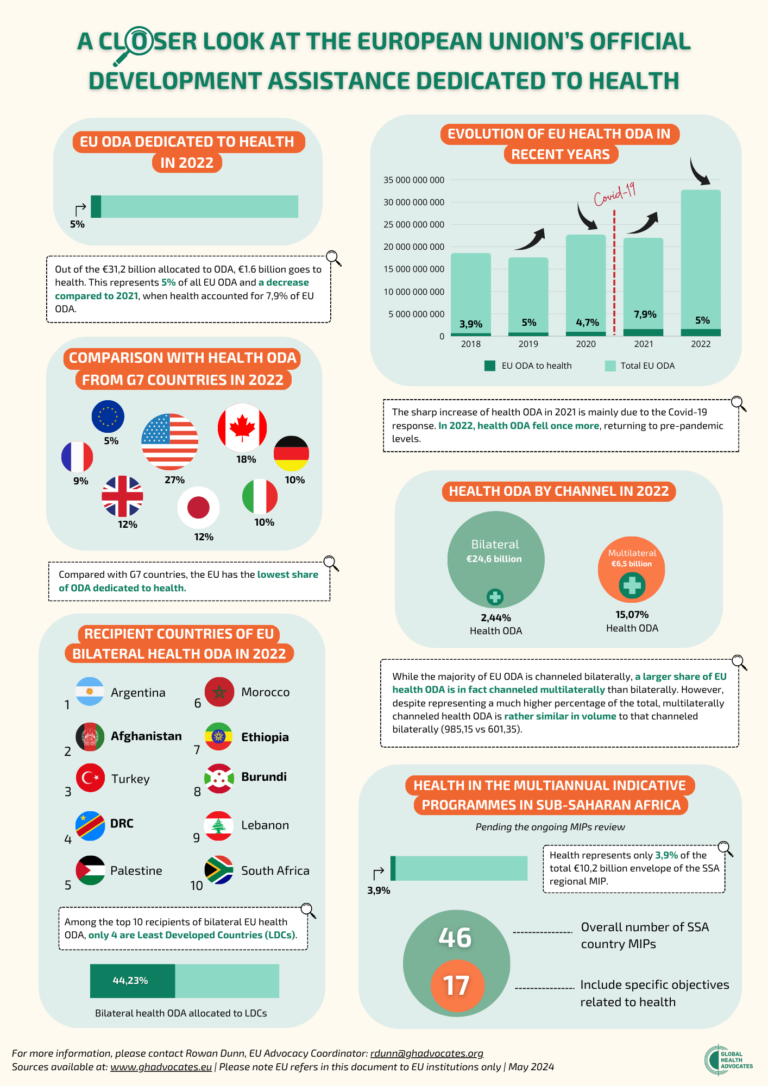The European Union has positioned itself as a key player in global health on the global political stage, as evidenced by its actions during the COVID-19 pandemic, the development of its new Global Health Strategy, and its considerable investments in major funds dedicated to fighting pandemics.
Yet, in the aftermath of the COVID pandemic, the world appears to have shifted its priorities, seemingly forgetting the lessons learned during the crisis. Development funds and support have been deprioritised in favour of migration, security, and defence issues. This shift is evident in the recent cuts to the Multiannual Financial Framework (MFF) Mid-Term Review (MTR), resulting in a €2 billion reduction in the Neighbourhood, Development, and International Cooperation Instrument (NDICI).
As we confront a multitude of health challenges intensified by climate change and biodiversity loss, it is essential that the European Union maintains its political and financial momentum to support global efforts to prepare for future pandemics, strengthen healthcare systems, and combat health inequalities worldwide.
Global Health Advocates is proud to publish an updated analysis of the key figures in the EU’s Official Development Assistance (ODA) dedicated to health in 2022, highlighting the most recent trends in EU health ODA contribution.
|
In 2022, the EU’s Official Development Assistance (ODA) allocated to global health decreased relative to 2021 levels, marking a return to pre-pandemic figures and indicating a step back from the increased funding seen during the pandemic. In 2022, the EU’s contribution of ODA dedicated to health remained the lowest among G7 nations, the same position as in 2021. On a brighter note, we welcome the positive trend in the proportion of bilateral health ODA allocated to Least Developed Countries (LDCs), which improved significantly, rising from 25.35% to 44.23%. |
Please note that the term “EU” refers in this document to the EU institutions only.
Sources
– Global Health Advocates’ calculations for the figures listed beneath are based on DonorTracker EU Profile and DonorTracker Global Health EU profile; an analysis of the latest official development assistance figures for members of the Development Assistance Committee published by the OECD, using the exchange rates by year shared by the OECD.
- EU ODA Dedicated to Health in 2022 (Figure 1);
- Evolution of EU Health ODA in recent years (Figure 2);
- Comparison with Health ODA from G7 countries in 2022 (Figure 3);
- Health ODA by Channel in 2022 (Figure 4).
– For Figure 5 (Recipient Countries of EU Bilateral Health ODA in 2022), Global Health Advocates’ calculations are based on an analysis of the latest official development assistance figures for members of the Development Assistance Committee published by the OECD, as well as the exchange rates by year shared by the OECD and the EU Aid Explorer.
– For Figure 6 (Health in Multiannual Indicative Programmes in Sub-Saharan Africa), Global Health Advocates’ calculations are based on the EU’s regional MIPs for Sub-Saharan Africa and the country-level MIPs for Sub-Saharan Africa.
For more information, please contact:
Rowan Dunn
EU Advocacy Coordinator
rdunn@ghadvocates.org




